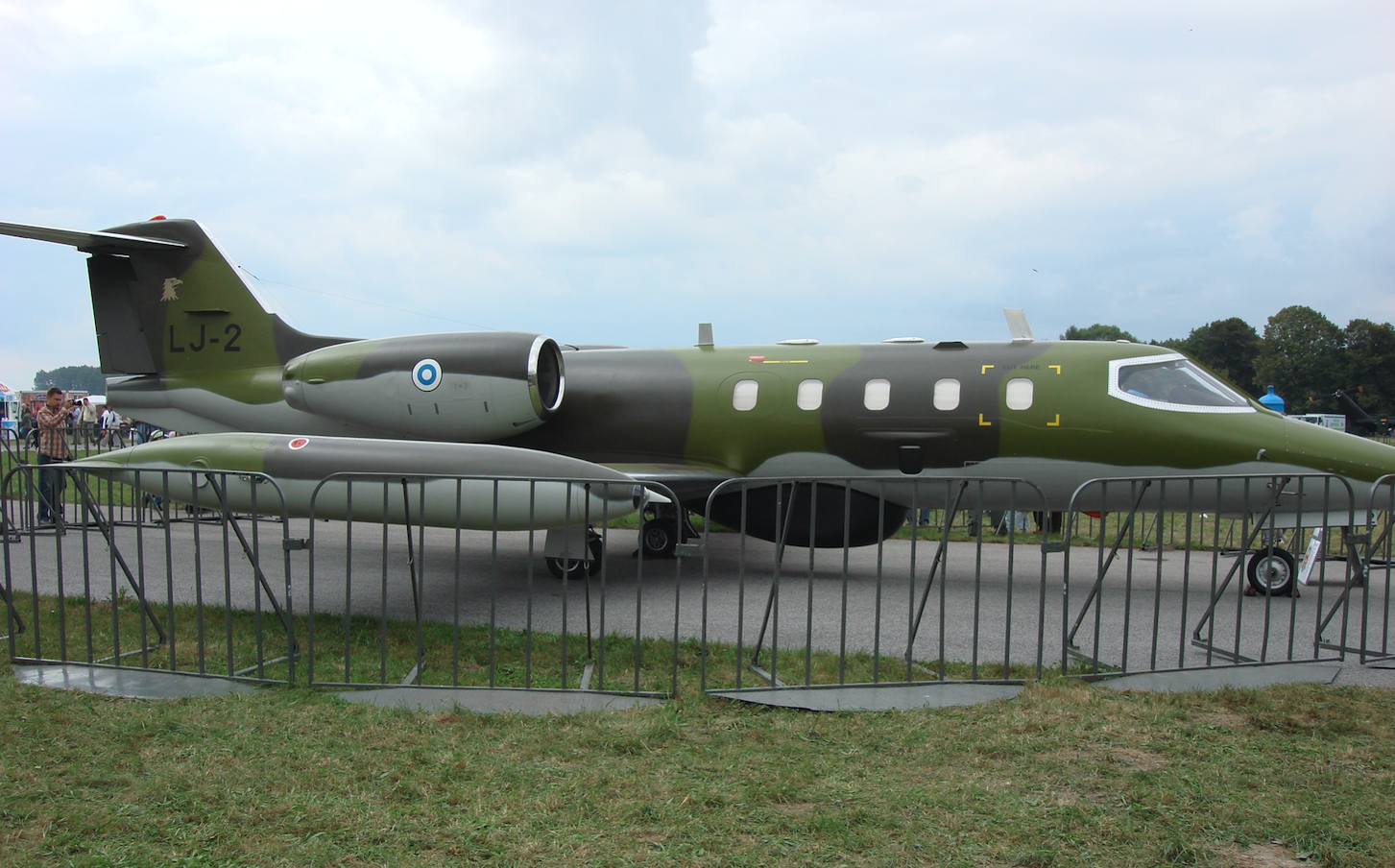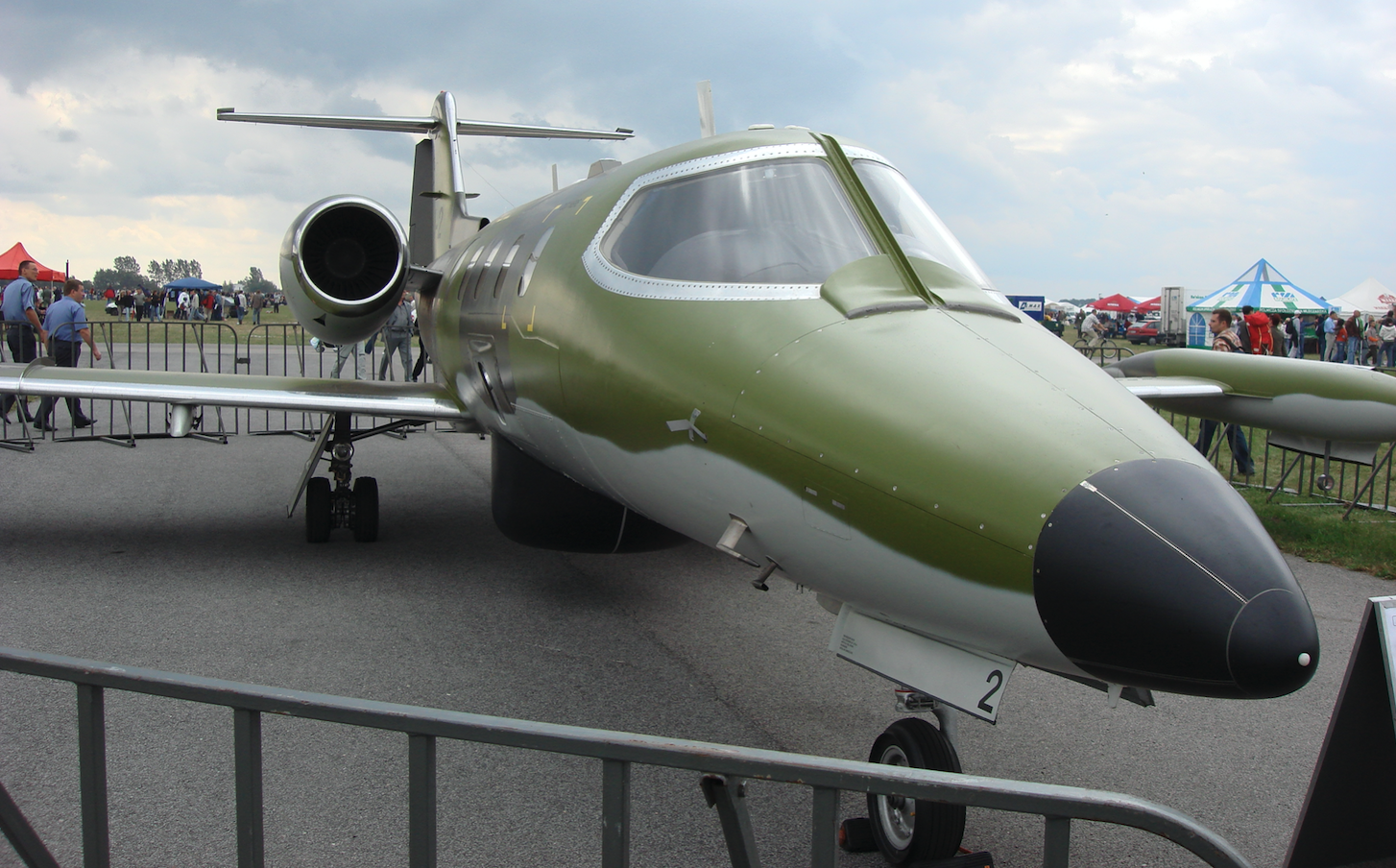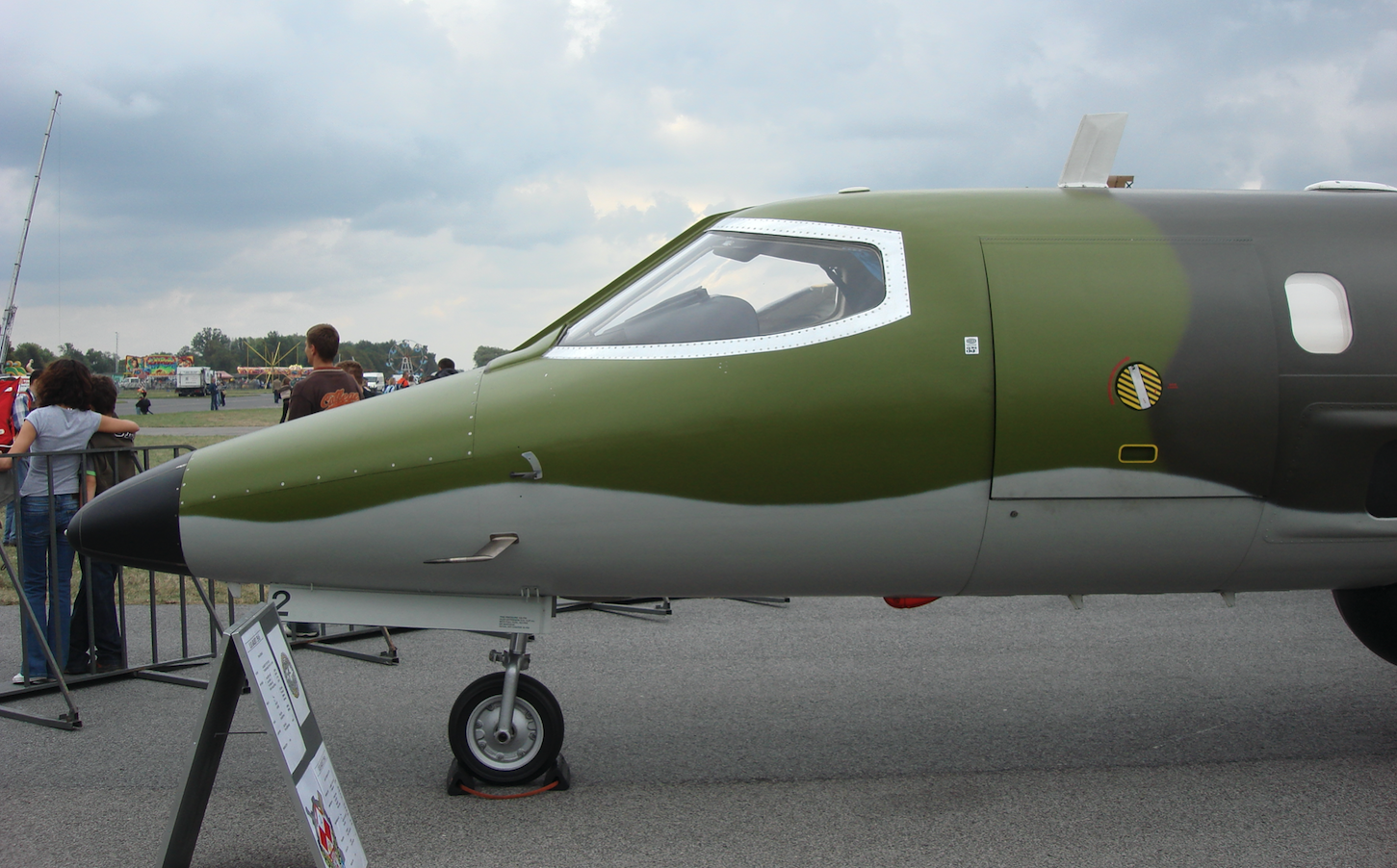Warszawa 2022-08-23
Bombardier Learjet 75 Liberty.





The 1960s were the period of development of a new class of business jets. These are business planes powered by turbojet engines, and then turbo-fans. Airplanes have become very popular with celebrities, artists, singers, industrialists and millionaires. At that time, it seemed that the fleet of these aircraft would develop very dynamically and expand. But that didn't happen, and for decades to come, business jets have been a niche class. It is true that these planes are the dream of millions of people, but this dream ends.
Learjet is a Canadian manufacturer of business aircraft for civil and military use based in Wichita, Kansas, in the United States. The company was founded in the late 1950s by William Powell Lear as the Swiss American Aviation Corporation. In 1963, the first flight was made by the aircraft designated Learjet 23. The aircraft received several orders. The planes turned out to be fast, small, with a long range and, above all, cult. The most popular of the family was the Learjet 35/45 aircraft. Since 1962, the company has produced approximately 3,000 aircraft of various types.
In 1990, Learjet was purchased by Bombardier.
In 2015, Bombardier developed another plane, which was designated the Learjet 80/85, but due to the lack of interest in serial production, it was not started. According to research by Bombardier, wealthy customers were looking for planes with a larger passenger cabin. New customers, on the other hand, were looking for cheaper propositions. In 2020, just 11 Learjet 75 Liberty aircraft were delivered, compared to 112 Learjet planes delivered in 2001. The Learjet 75 Liberty was in the same market segment as the popular Embraer Phenom 300 (E) or the Cessna Citation CJ3 +. It is worth noting that rival planes are cheaper to buy and charter. The price for a one-hour flight on the Learjet 75 Liberty chartered plane is $ 3,400. In 2021, the price of the new plane was $ 9.9 million. In February 2021, Bombardier announced the end of production of the Learjet 70/75 aircraft, in favor of the larger aircraft. The Learjet aircraft maintenance base is to be maintained until 2035.
In Poland, the first Learjet 75 Liberty was purchased in 2015 by a private company. The aircraft received registration SP-AAW, serial number 45-490. In 2020, the plane was sold to the next owner. The plane had a flight time of 807 hours. Honeywell TFE731-40BR-1B engines.
Learjet 75 Liberty planes for the Polish Medical Air Rescue.
Two Learjet 75 Liberty planes for the Polish Medical Air Rescue were ordered in 2019. The contract with the supplier was signed at the end of 2019 and officially announced in January 2020. Then Bombardier announced the sale of two Learjet 75 Liberty aircraft to North Dakota-based Fargo Jet Center (FJC), tasked with rebuilding the aircraft to medical configuration (medevac) and delivering them to the Warsaw-based Polish Medical Air Rescue (LPR).
On December 16, 2021, the first Learjet 75 Liberty plane landed at the Okęcie airport in Warsaw. The machine flew to Poland from Fargo in the USA to Warsaw with stopovers in Goose Bay, Reykjavik and the Scottish Wick. On December 20, 2021, a second plane landed in Warsaw. The aircraft received the SP-MXR (No. 45-595) and SP-MXS (No. 45-596) registrations and were put into service in April 2022.
The planes are designed to transport two seriously ill patients. It is possible to transport the baby in an incubator. It is possible to mount three pairs of stretchers for the medical evacuation of slightly injured patients.
Currently (2022), the LPR fleet consists of 36 aircraft: 27 Airbus EC135 P2 + / P3 helicopters, two Robinsons R44 Raven II, two Piaggio P.180 Avanti, two Learjet 75 Liberty and three Tecnam P2008JC MkII.
Learjet 75 Liberty design.
The Learjet 75 Liberty was developed in 2013 and is powered by two rear mounted Honeywell TFE731-40BR engines. They each gain 3,850 pounds of thrust. This allows the plane to take off at a distance of only 4,440 feet. Minimum landing distance is 2,296 feet. The Learjet 75 Liberty is capable of flying at an altitude of 51,000 feet at a speed of 465 knots. The aircraft can travel up to 2,070 nautical miles (2,393 miles / 3,854 km).
The cockpit of the aircraft is classic and has space for two pilots. Bombardier's cockpit has installed the Bombardier Vision Flight Cabin. Here are the latest navigation and communication technologies. Synthetic Vision, improved ergonomics and advanced controls. Integrated Garmin G5000 Avionics Kit, Synthetic Vision System (SVS) and Triple Integrated FMS with Graphical Flight Planning.
The passenger cabin is designed for the transport of 8 - 9 people, depending on the configuration of seats. The seats are individual, spacious and set forward or backward facing. Passengers have at their disposal large tables and electric USB connectors, electrical sockets and reading lamps. At the customer's request, a satellite internet system is installed. The entrance to the plane is provided by a pocket-type door with steps at the bottom.
2 × Honeywell TFE731-40BR Turbine engines, 3,850 lbf (17.1 kN) each.
Data T-T Learjet 75 Liberty:
Length 58 ft 0 in (17.7 m). Span 50 ft 11 in (15.5 m). Height 14.13 ft (4.31 m). Wing area 311.6 sq ft (28.95 m2). Curb weight 13,890 lb (6,300 kg). Maximum weight 21,500 lb (9,752 kg). Cruising speed 465 kn (535 mph, 861 km / h). Range 2,040 nm (2,350 mi, 3,780 km). Up to 51,000 ft (16,000 m) flight altitude.
Written by Karol Placha Hetman
